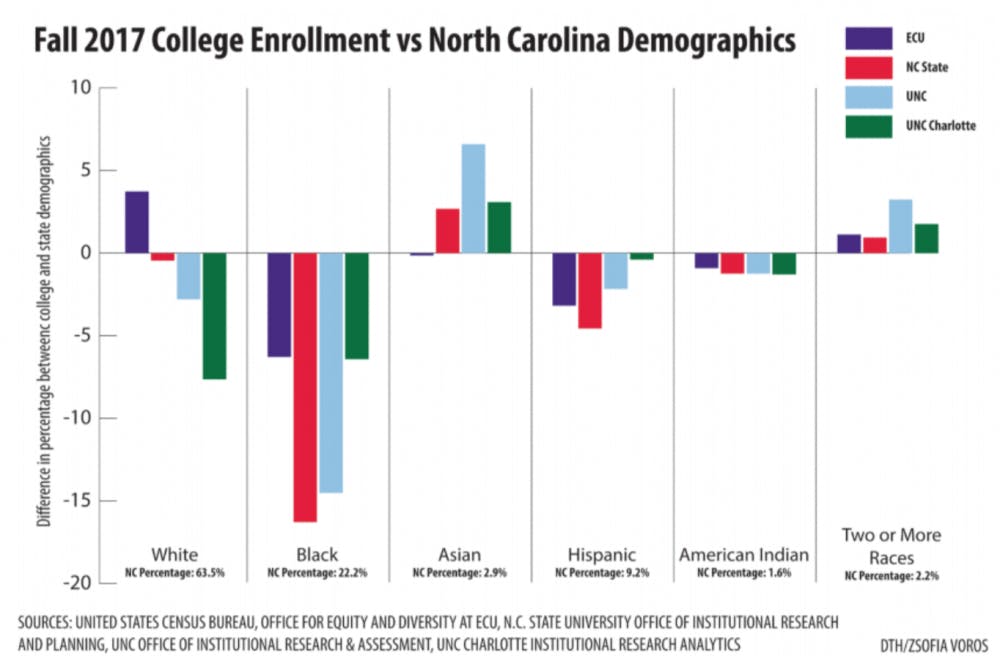As of fall 2017, UNC-Chapel Hill had a 7.8 percent enrollment rate for Black students, one of the lowest in the state, while just over 22 percent of residents in North Carolina are Black.
Of the five largest public universities in North Carolina, including North Carolina State University, UNC-Charlotte, UNC-Greensboro and Eastern Carolina University, only N.C. State had a lower percentage of Black students — at 5.8 percent.
Additionally, as of fall 2017, UNC had a 7.5 percent enrollment rate for Hispanic students, compared to the state population of 9.2 percent. In the last six years, the Hispanic population in North Carolina has risen by 16.5 percent, while the percentage at UNC has remained between 6 and 8 percent.
Dexter Robinson, an academic adviser and Men of Color campus staff liaison, said he didn’t have an exact answer as to why the percentage is low but said there have been individuals across campus and the state who have been vocal about wanting to raise the percentage of Black students at UNC and reflect the percentage in the state.
Besides sheer acceptances, Robinson said the diversity problem could lie in the University’s yield. He said in the current cultural climate, and with UNC making headlines for the Silent Sam controversy, potential minority students may choose to go to college “where they feel more comfortable.”
“They feel (other schools are) going to be a little more welcoming environment, so we do have students of color that are choosing not to come here because of the cultural climate of the country,” Robinson said.
When first-year Maggie Stein was choosing between colleges, she had two priorities at the top of her list: diversity and prestige.
“Carolina does a good job compared to diversity at other schools, but that’s because the standard is pretty low,” Stein said.
Both Stein and Robinson said much of the problem lies in the treatment of students of color once they arrive on campus.



